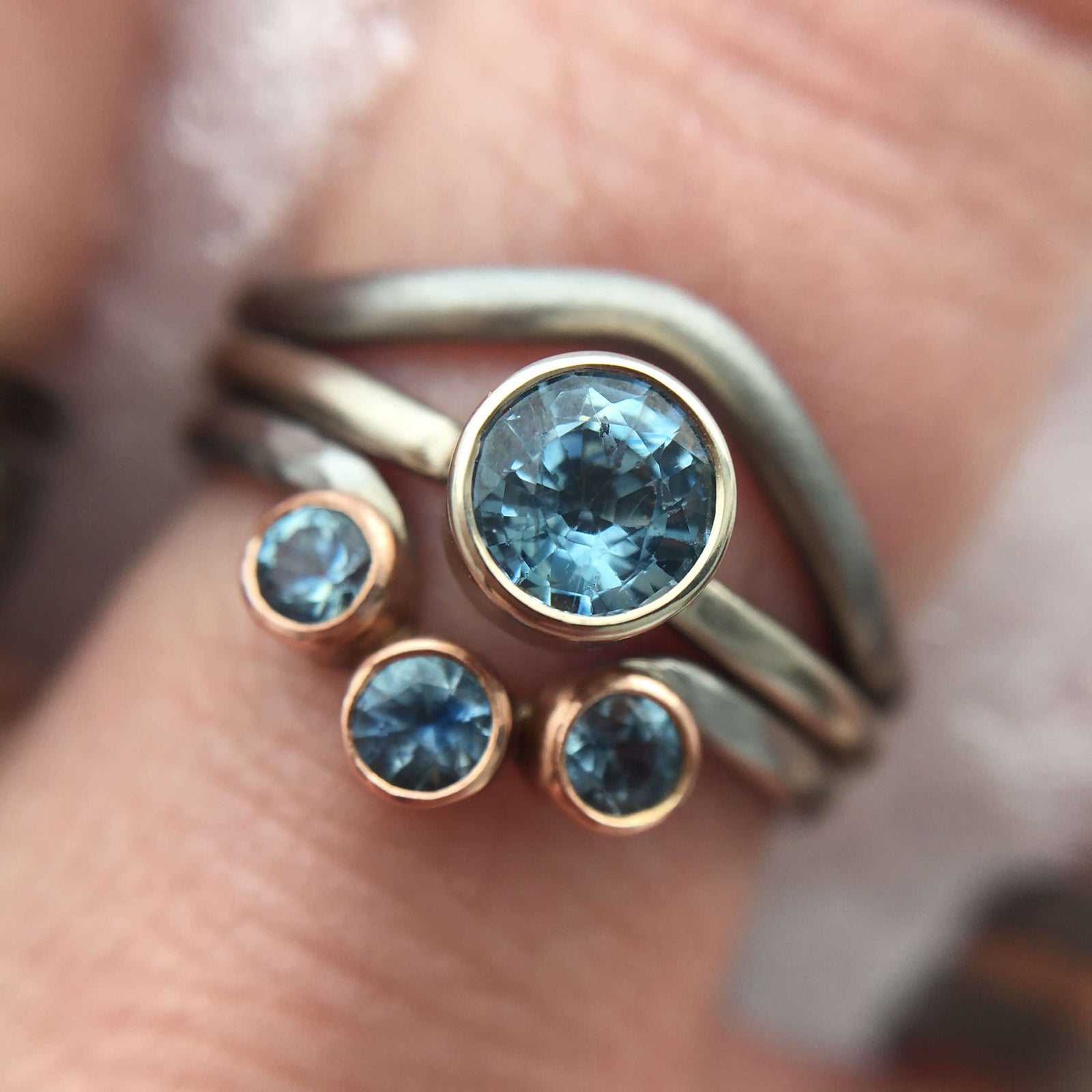Your Cart is Empty
EC Design Studio is open Thursday's 12-5pm and Saturday's 11-4pm
EC Design Studio is open Thursday's 12-5pm and Saturday's 11-4pm
EC Design Studio is open Thursday's 12-5pm and Saturday's 11-4pm
EC Design Studio is open Thursday's 12-5pm and Saturday's 11-4pm
Salt and Pepper Diamonds
Sapphire Candy Shoppe
Signature Cell Collection
Minimalist Essentials
Contour Stacking Bands
Sapphire Candy Shoppe

Sapphire jewelry so juicy you'll want to eat it!
Signature Cell Collection

The EC Design classics
Minimalist Essentials

Beautifully simple
Contour Stacking Bands

Customize your wedding bands!
June 15, 2021

November has two birthstones, topaz and citrine, both of which are thought to bring about calming energy and warmth. Most people think of November’s birthstones as yellow and orange in color, but there is a rainbow of possibilities when it comes to topaz. Topaz can be found in shades ranging from yellow, orange, and brown to purple and pink. It also occurs in soft hues of blue and even colorless. Most blue topaz are treated in one way or another to enhance their color, but the treatment causes minimal damage to the stones and the resulting products are typically stable and reasonably priced considering their rich color. On rare occasions topaz can also be found in shades of red.
Citrine, on the other hand, is a variety of quartz that ranges in color from light yellow to deep, earthy orange, depending on its iron content. Natural citrine is a part of the quartz family, but they can also be artificially created by heat treating amethyst to develop warm inviting citrine tones.
Either stone is considered hardy enough for use in most jewelry. Topaz has a hardness rating of 8. Like many gems, cleaning with warm soapy water is recommended. It is not tough enough to withstand steam or ultrasonic cleaning and prolonged exposure to heat and light can cause discoloration in the brown and yellow varieties.
Citrine has a lower hardness rating of 7, but it is tougher than topaz. In addition to the recommended cleaning process of using warm, soapy water, citrine can also be cleaned with ultrasonic machines; but much like topaz steam cleaning should be avoided.
There are several different sources for November’s birthstones. In recent decades, pink topaz has been mined in and around northwestern Pakistan. For centuries the most sought after topaz has come from Brazil, which is also a source for heat treated amethyst citrine. Citrine is commonly sourced from western Europe, Mexico, and various regions in South America. Brazil’s neighbor, Bolivia, is a popular source for natural citrine. In addition to natural citrine, the mines in Bolivia have been known to produce a unique stone that is a combination of citrine and amethyst. These special dual-stones are known as ametrines.
The gemological materials that make up topaz and citrine are considered anything but rare. The abundance of these stones and their inherent clarity made it a favorite of ancient Greeks, Romans, and the Scottish alike for centuries. Since topaz and citrine can occur in large crystals, gem cutters have the luxury of creating incredible shapes that may not be possible when working with types of gemstones. A well-known example is the ‘American Golden’ topaz. The raw stone was 26 pounds and took 2 years to cut. When all was said and done the gemstone was 22,892 carats with 172 facets and it measured nearly 7 x 6” with a depth of 3.7”. This impressive gemstone is on display at the Smithsonian National Museum of Natural History in Washington, D.C.
Want to be the first to hear about new releases, sales, and special offers? Sign up here to stay in the loop.